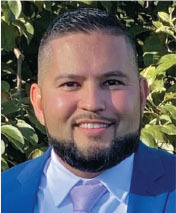
Supply chains, long dominated by white males, are slowly becoming more diverse, particularly in the areas of gender and race/ethnicity. As covered in the previous issue of MHI Solutions, women now represent about 40% of the total supply chain workforce, according to research from Gartner. The firm also recently released the findings of its 2021 Supply Chain Diversity, Equity & Inclusion (DEI) Survey, finding that people of color currently comprise 30% of the full-time supply chain workforce, but remain scarcely represented in leadership roles: vice presidents (9%), directors (11%), senior managers (11%), managers/supervisors (17%).
Further, in a separate study, Gartner found that employees increasingly expect their employers to take a public stand on social and cultural issues—including a commitment to greater internal DEI—whether they directly impact the business (87%) or not (74%). Many more companies did so in 2020, as America’s long history of racial injustices and gender inequality prompted not just nationwide demonstrations, but awareness in the workplace.
“Current and prospective employees want to see action in the form of real investment—in terms of budget, resources or internal changes,” noted Dana Stiffler, VP analyst at Gartner and lead researcher of the DEI study. “They also want transparency regarding how the organization arrived at the chosen actions and its progress against those actions.”
Gartner’s DEI Survey found that more than 50% of supply chains have a stated objective to improve DEI. Of those, 23% include formal DEI targets and goals on management scorecards. The larger the company, the more likely it is to have a DEI initiative; only 24% of small business supply chains do.
The benefits of a more diverse workforce are numerous. They include an enhanced ability to address both challenges and opportunities through a variety of perspectives; better alignment with a customer base; and innovation through the collaboration of multiple viewpoints. Plus, a deeper talent pool: Recruiting from a more diverse racial/ethnic and gender base is one approach to addressing the ongoing talent shortage the industry has struggled with for years.
With people of color currently representing just 30% of the supply chain workforce, there is obvious potential for organizations to expand their ranks while simultaneously growing their workforce diversity. As for how to best achieve that goal, we talked with six supply chain professionals (who also happen to be people of color) about their career experiences, their mentors and supporters, and ways the industry can attract even more diversity to the field.
A range of diverse experiences
Within their own organizations and at supply chain events, most of the professionals acknowledge frequently being one of the few minorities in the room. Each shared their experiences and reflected on how they navigate those situations.
 Joel Thomas, Director of Sales, Carter Intralogistics
Joel Thomas, Director of Sales, Carter IntralogisticsDuring a session break, Thomas networked around by asking participants what—as someone new to supply chain and material handling—did he need to learn about the industry.
“Everyone was super friendly, helpful, inclusive and welcoming,” he recalled. “But I did make a point to ask MHI what they were doing to bring more diversity into the organization. Because I saw, and still see, tremendous opportunities for more diversity, particularly as the industry continues growing and expanding.”
Overall, Thomas says bias and racism has been a part of his entire existence, although he doesn’t feel it has impeded his career trajectory. “I always try to sell myself as who I am and what I do—not how I look. People of color do have pretty darn thick skin, but it is very difficult not to notice when you’re in a room of all white people.”
Several years ago, Thomas attended a previous employer’s sales meeting held in a venue that had Confederate flags as part of the décor. “I was the only minority in a leadership position, and I felt it was on me to educate my colleagues that it was quite offensive,” he said. “It was uncomfortable, but it’s important to educate others. When minorities keep our mouths shut, then others will never understand.”
As a woman of color, Chep Herron, manager of contracts at Tennessee Valley Authority, started in the transportation side of supply chain, where she noted many women had found success and acceptance in the industry. In other roles at other companies, she did experience microaggressions, although attributed it more to her gender than her race. A native Kenyan, she says having the perspective of a foreigner sometimes makes it difficult to distinguish the source of bias.
 Chep Herron, Manager of Contracts, Tennessee Valley Authority
Chep Herron, Manager of Contracts, Tennessee Valley Authority“I have felt put down as a woman, and that I had to work twice as hard and jump twice as high as my male colleagues to gain trust and respect,” she noted. “It doesn’t really bother me, and I try not to see it. I just work as hard as I can to prove myself.”
As a teen, picking cherries in Yakima, WA, Luis Castaneda, senior account manager at Raymond West, likewise learned the importance of hard work and the impression it made on others. “It was the people that were willing to get up earlier and stay longer and work harder and have excellence and integrity in their work that would get the biggest paycheck,” he said.
 Luis Castaneda, Senior Account Manager, Raymond West
Luis Castaneda, Senior Account Manager, Raymond WestIn applying that lesson to his career, Castaneda doesn’t feel that microaggressions or racism have affected his trajectory or caused him to lose a sale. “When I got into corporate America, I thought nepotism and preferential treatment would play a bigger role, but no. I’ve experienced none of those things.”
Kaushik Mohan reported a similar experience at Georgia-Pacific, where he’s worked since graduating from the University of Tennessee. Currently a supply chain manager, Mohan said he believes his company’s culture is the key to its success in attracting and retaining diversity.
 Kaushik Mohan, Supply Chain Manager, Georgia-Pacific
Kaushik Mohan, Supply Chain Manager, Georgia-Pacific“At Georgia-Pacific, we have a lot of racial and gender diversity at all levels, including very high leadership positions all the way down to entry-level employees,” he noted. “It’s a very horizontal landscape in terms of hierarchy, which is part of it. But also, two of our company’s guiding principles—transformation and principled entrepreneurship—play a strong role.”
Mohan explained that transformation allows employees to seek out and develop the visions and strategies that create the greatest value for the company, while principled entrepreneurship is a philosophy of mutual benefit that expects staffers to go above and beyond by collaborating to improve outcomes internally, as well as for customers and society as a whole.
In practice, he continued, the two result in “a true sense of team effort, of if you need help, someone will give it to you. Frankly, they foster a feeling of community that transcends race or gender.”
Like Mohan, James Adams III, supply chain manager at Intertape Polymer Group, has also worked for the same company since graduating seven years ago. While he is one of the very few minorities at the executive level, he noted that he’s been promoted three times since joining the company.
 James Adams III, Supply Chain Manager, Intertape Polymer Group
James Adams III, Supply Chain Manager, Intertape Polymer Group“When I first joined the company, it was quite a bit smaller, so I started out on big projects right from the start. Plus, the supply chain department at the time was smaller and was in the same office as the CEO. So, although I did feel like there were more eyes on me, it wasn’t necessarily because of my race,” he said. “I was very focused on doing my work well and getting it right and making a name for myself.”
Outside the corporate offices, there’s much more diversity in Intertape’s manufacturing and distribution facilities, Adams continued. He spends a lot of time on the floor, talking with minority associates and learning what’s important to them. “If I didn’t bring that back to the corporate office, nobody else would do that. People of color are more comfortable sharing their concerns with other people of color.”
Tiesha Robinson, senior inventory analyst at Avery Dennison Label and Packaging Materials, has likewise advanced through several roles during her tenure at the company. Like Mohan and Adams, she too has been with Avery Dennison since graduating with a degree in logistics.
 Tiesha Robinson, Senior Inventory Analyst, Avery Dennison Label and Packaging Materials
Tiesha Robinson, Senior Inventory Analyst, Avery Dennison Label and Packaging MaterialsShe initially started as a production scheduler in a manufacturing facility in Indiana, where she was one of very few women, as well as one of two Black employees.
“I was also very young among older men who had been there for years, and new to the company. So, I often felt intimidated by my co-workers, and it was difficult to build trust at times,” recalled Robinson. “I definitely felt the microaggressions at that location and I also felt alone. There were no other women of color in that facility whom I could confide in or get feedback about something that had happened and advice about how to handle it the next time.”
That changed when she moved into a corporate role, first at Avery Dennison’s Atlanta offices, and currently in Cleveland.
“Here, there’s a lot more diversity, and most of us are relatively young, in our 20s and 30s. That said, I think there may be three Black people in our entire supply chain department, and I’m the only female,” Robinson noted, adding that she’s built relationships with other women of color in different departments who provide support and serve as sounding boards.
The importance of support, culture and mentorship
Support within the workplace is a critical component of equity and inclusion, noted the Gartner DEI Report. Not only in the form of work friendships, but also through formal and informal mentorship, and in defining and demonstrating a clear career path for advancement to all staffers, but particularly to people of color. Without such leadership development, minority underrepresentation will continue at the senior levels.
“We must mentor people of color and prepare them for their next career step,” noted Stiffler. “Leaders must ensure equitable promotion and pay structures, and provide clarity around which experiences are critical for first-time managers to have had to be successful in their new role. DEI considerations must also be integrated into performance management and succession planning.”
That level of transparency and support is another aspect of Georgia-Pacific’s culture, added Mohan. “People stay for decades, and I think that’s rare anymore. But the company is dedicated to growing and challenging its people. I’ve been here four years and I’m in my third position, because they keep offering me new roles that challenge me,” he said.
Inclusivity as well as mentorship, Mohan continued, have also been important to his and others’ careers there. While there isn’t a specific mentorship program, senior leaders like his own boss (whom he notes is a woman of color) work hard to empower their teams.
“After a project is over, she always asks for feedback and wants to know our input, positive or negative. Everyone having a voice is super important; here, everyone’s input is equally valued. I see it very actively, even at the executive level when I present projects there,” he said.
Both receiving and providing mentorship has been very valuable to Castaneda. “I’d call it unofficial mentoring, but I’ve learned from some of the best in the industry who have taken the time so share with me how they achieved success,” he said.
“Younger generations should be willing to be vulnerable about what they don’t know, and to connect with older people in the industry to ask questions, listen, and learn. If you look at someone’s track record and they’ve been successful for 20 years, chances are they’re doing something right,” he explained, adding that he also truly enjoys mentoring others in turn. “I love helping younger salespeople as they’re learning how to build and apply strategies that can help solve customer problems.”
Herron added that having mentors has been “the number one thing that is helped me move forward. I’ve had mentors in all the companies I’ve worked for—both male and female—and I still keep in touch with them,” she said, adding that companies need to prioritize and even formalize, if necessary, mentorship programs that specifically support and develop diverse hires.
 DMITRY DEMIDOVICH/SHUTTERSTOCK.COM
DMITRY DEMIDOVICH/SHUTTERSTOCK.COM“Companies should not hire minorities just to check the diversity and inclusion box. They need to be sure they take them under their wing and help them grow post-hire,” continued Herron. “Perhaps their first role isn’t a good fit, but there are so many different areas of supply chain I think it’s important to expose people to the other options within the company. It’s important to focus on the retention piece and providing other opportunities for people.”
Robinson agrees. “Organizations have to make an effort to meet people where they are,” she said. “Avery Dennison recently launched employee resource groups to help diverse employees connect with each other, and it’s definitely helped provide a platform for us to come together.”
Still, she continues, as a minority female in supply chain, she occasionally wonders how much of the motivation behind corporate DEI initiatives is driven by a sincere effort at cultural change versus just checking boxes to meet publicly announced diversity metrics. “Our company is hiring more women, which is great. But I don’t think I’m alone as a minority in supply chain by sometimes second guessing these initiatives,” Robinson said.
Ways to attract greater diversity to supply chain
In addition to the importance of culture, support, mentorship, sincere efforts in prioritizing DEI goals and objectives, raising the profile and visibility of what supply chain is—and the career opportunities within the field— were highlighted by our interviewees.
Thomas said that hiring practices should be both inclusive and equitable. “When I’m hiring, I always look to add diversity of experience. I try to find the person who fills that skill gap rather than the person of color.”
Castaneda agreed. “I don’t know that we need more people of any color, gender, race; I think we just need hardworking people. “In my opinion, what we need is equality of opportunity. If we have that, we can be sure we will add the best qualified individuals to our industry. To achieve that, companies need to give everyone the same opportunities and allow the best candidate to take the position, regardless of their color, gender or race,” he said.
Further, younger generations see more people of color represented in the field, said Thomas. “When MHI hosts the Student Days events at ProMat and MODEX, with high school and college students touring the show floor, I always participate because I feel it’s important to show minority students that here I am, a minority as well, who is successful in the industry. I hope that will further interest them in joining our field.”
Thomas also feels the industry should reach out to younger generations, not just at the collegiate and high school levels, but in middle schools as well. When he chaired MHI’s Conveyor and Sortation Systems (CSS) industry group, Thomas pushed for more videos to show what supply chain is, rather than expecting students to read about it.
“It’s great when I see Amazon ads that show what happens in supply chains,” he noted. “They feature conveyors and sorters and robotics—cool things that excite a much younger demographic than we’ve been targeting.”
Adams said that companies need to be willing to consider alternative work models to attract and retain more diversity. “When I worked at my company’s headquarters in Sarasota, FL, the city itself was not very diverse. Initially there was more diversity in the office, but for various reasons, the people I was closest to at work left,” he recalled.
“I liked my other coworkers, but I didn’t really have an active social life. I felt like I was there by myself, more or less,” said Adams. As he was in a long-distance relationship and already traveled extensively for his job, Adams asked if he could relocate and work remotely from home in Atlanta. His bosses readily agreed.
He also feels that minority students don’t necessarily have the same awareness of or access to supply chain internships.
“It often seems that my white counterparts are able to get their college-aged kids internships. But without a diverse workforce, minority students don’t have that same opportunity,” noted Adams, who’d like to see companies reach out to schools with more diverse populations more proactively to recruit for interns.
“I started as an accounting major, but then found supply chain through testing at my university’s career services. Having an internship in supply chain really helped me figure out that it was the right career for me. I’d like to see other minority students be exposed to more of those opportunities,” he concluded.
To learn more about MHI’s DEI programming, visit mhi.org/about/dei.
 MHI Solutions Improving Supply Chain Performance
MHI Solutions Improving Supply Chain Performance